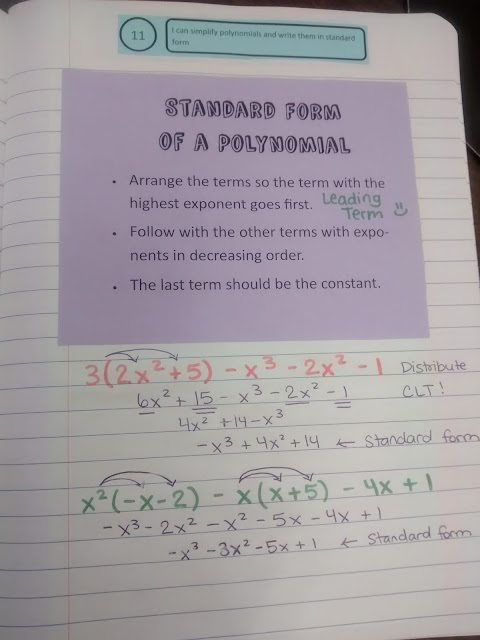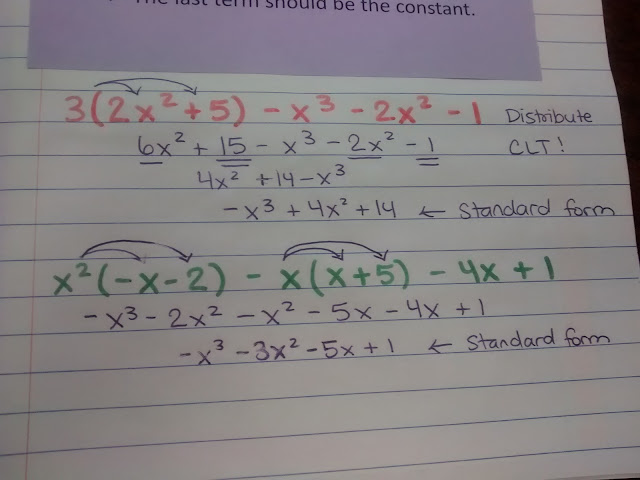Every year, I keep trying a different way to review exponent rules. For my Algebra 2 students, I gave them a list of exponent rules.
We wrote a word summary of what type of problem each exponent rule would help us with. My marker choice was not good for photographing... Sorry!
They were really struggling with applying these to the problems we were simplifying. They kept claiming that they just didn't know where to start.
Eventually, I broke down and gave them an order of steps to follow. This helped them a lot. Though, I wish they could solve these problems without me writing out step by step directions.
We were working on simplifying expressions like this:
I guess where I struggle with this is that it *should* be review in Algebra 2. We don't have time to derive all of the rules from scratch. But, they act like they've never seen anything like this before. My main motivation for doing this as a skill is to prepare for dealing with negative and zero exponents when we work with rational exponents and logarithms.
I also drilled into their heads that (2xy)^2 = 4x^2y^2. For the past few years, most students have said 2x^2y^2 which was driving me bonkers. We did lots and lots of practice problems with that, and I don't think I've seen anyone make that mistake at all lately. Yay!
If anyone has ideas about how to review this without reteaching it from the beginning, I'd LOVE to hear it!
Exponent Rules file is here.
We wrote a word summary of what type of problem each exponent rule would help us with. My marker choice was not good for photographing... Sorry!
They were really struggling with applying these to the problems we were simplifying. They kept claiming that they just didn't know where to start.
Eventually, I broke down and gave them an order of steps to follow. This helped them a lot. Though, I wish they could solve these problems without me writing out step by step directions.
We were working on simplifying expressions like this:
I guess where I struggle with this is that it *should* be review in Algebra 2. We don't have time to derive all of the rules from scratch. But, they act like they've never seen anything like this before. My main motivation for doing this as a skill is to prepare for dealing with negative and zero exponents when we work with rational exponents and logarithms.
I also drilled into their heads that (2xy)^2 = 4x^2y^2. For the past few years, most students have said 2x^2y^2 which was driving me bonkers. We did lots and lots of practice problems with that, and I don't think I've seen anyone make that mistake at all lately. Yay!
If anyone has ideas about how to review this without reteaching it from the beginning, I'd LOVE to hear it!
Exponent Rules file is here.








































































